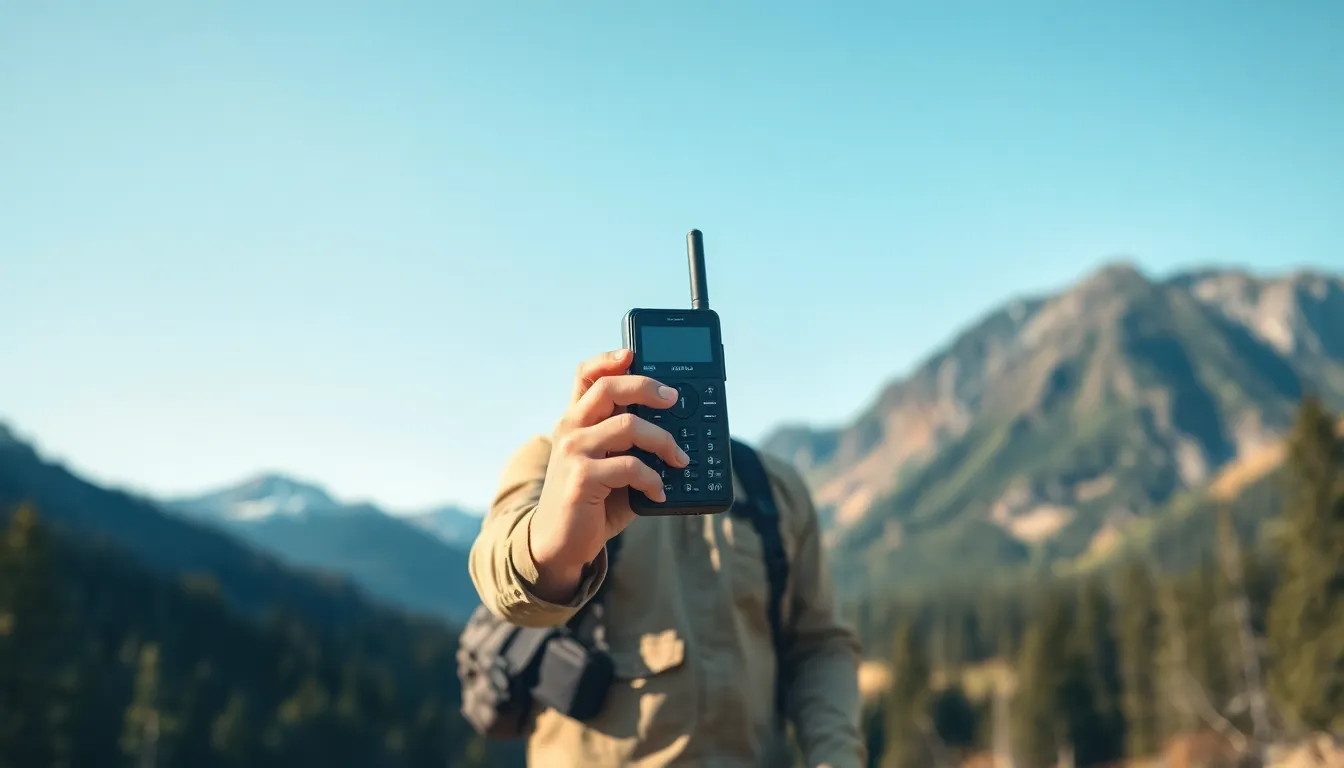In a world where cell service can vanish faster than your last slice of pizza, satellite phones swoop in like superheroes. Forget about those pesky dropped calls—these devices connect you to the world no matter how remote your location. Whether you’re scaling mountains or sailing the high seas, satellite phones ensure you’re never too far from a chat with your mom or a quick tweet about your epic adventure.
Table of Contents
ToggleOverview Of Satellite Phones
Satellite phones deliver critical communication capabilities in remote or emergency situations. These devices utilize satellites in Earth’s orbit to send and receive signals, enabling users to stay connected anywhere.
Definition And Purpose
A satellite phone serves as a portable communication device that connects directly to satellites rather than ground-based cell towers. Its primary purpose lies in providing reliable voice and data services in locations where traditional cellular networks cannot reach. Many users rely on satellite phones during outdoor adventures, maritime operations, or disaster response scenarios to ensure they can communicate effectively.
Key Features
Key features include global coverage, durability, and long battery life. Global coverage ensures connectivity across oceans and remote terrains. Durability typically involves water-resistant and rugged designs, making these phones suitable for harsh environments. Long battery life allows extended use without frequent recharging, crucial in areas with limited access to power sources. Additional capabilities often include GPS tracking and emergency SOS functions, enhancing safety for users in precarious situations.
How Satellite Phones Work

Satellite phones operate through a sophisticated communication system that relies on satellites orbiting the Earth. These devices utilize radio signals to establish connections with satellites, ensuring that users can communicate from virtually any location.
Communication Process
Satellite phones establish communication through a straightforward process. First, the phone transmits a signal to a nearby satellite. Then, the satellite relays the signal to a ground station, which connects the call to the traditional telephone network or another satellite phone. This seamless transmission allows for reliable voice and data services, crucial for users in remote areas. During emergencies, the ability to send and receive messages often proves vital. Users benefit from global coverage, ensuring they can stay connected regardless of geographical challenges.
Satellite Constellations
Satellites operate within constellations specifically designed for telecommunications. Each constellation comprises multiple satellites, collectively covering vast areas of the Earth. For instance, Low Earth Orbit (LEO) constellations feature satellites orbiting at approximately 1,200 miles above Earth, providing lower latency and improved signal quality. In contrast, Geostationary satellites remain fixed over a specific point, enabling consistent service over designated regions. Relying on these satellite configurations means users achieve connectivity in diverse environments, from mountains to oceans, where traditional networks fall short.
Types Of Satellite Phones
Satellite phones fall into two main categories: Geostationary and Low Earth Orbit. Both types serve unique purposes and offer distinct functionalities for users.
Geostationary Satellite Phones
Geostationary satellite phones connect through satellites positioned in a fixed orbit around Earth. These satellites maintain the same rotation as the planet, allowing for a consistent connection in specified areas. Users experience a reliable signal, as these devices communicate with satellites that cover large geographic regions. However, latency can be a concern, as the distance affects response times. Geostationary systems, such as those provided by companies like Inmarsat, ensure good connectivity for maritime and aviation industries, making them suitable for users in stable locations.
Low Earth Orbit Satellite Phones
Low Earth Orbit (LEO) satellite phones operate through satellites traveling much closer to the Earth’s surface. This configuration reduces latency significantly, providing clearer and quicker communication. Users benefit from enhanced signal strength, making these phones ideal for fast-paced activities like adventure sports or exploration. Notable LEO networks, including those from Iridium and OneWeb, feature a constellation arrangement that guarantees coverage across the globe. As satellites in LEO continually move, they ensure users remain connected even while on the move.
Advantages And Disadvantages
Satellite phones offer a spectrum of benefits and challenges that users should consider.
Benefits Of Using Satellite Phones
Reliable communication remains the most significant advantage of satellite phones. Users find consistent connectivity in remote locations where traditional cell networks falter. Global coverage ensures that individuals, including adventurers and emergency responders, stay in touch, regardless of geographic barriers. Adventurers often appreciate features like GPS tracking and SOS functions, which enhance safety during outdoor activities. Durability plays a crucial role as well, with these devices designed to withstand harsh conditions, including extreme temperatures and rugged environments. Long battery life serves users well, allowing for extended use during trips away from power sources.
Limitations And Challenges
Several limitations exist when using satellite phones. High costs associated with purchasing and operating these devices can deter potential users. Call quality, while generally reliable, may not match that of traditional cellular phones due to latency or signal interruptions. Weather conditions can affect connectivity, especially in severe storms or heavy cloud cover. Additionally, satellite phones often require a clear line of sight to the sky, limiting usage in dense urban areas or heavily wooded environments. User interfaces may also present a learning curve, creating challenges for individuals unfamiliar with the technology.
Satellite phones are invaluable tools for anyone venturing into remote areas or engaging in activities where traditional communication methods fall short. Their ability to maintain connectivity through sophisticated satellite networks ensures that users can share crucial information and stay safe in emergencies.
With features like GPS tracking and SOS functions, these devices enhance safety and reliability, making them essential for adventurers and professionals alike. While challenges such as cost and potential call quality issues exist, the benefits far outweigh the drawbacks.
As technology continues to evolve, satellite phones will remain a vital resource for seamless communication, no matter where life’s adventures take them.





